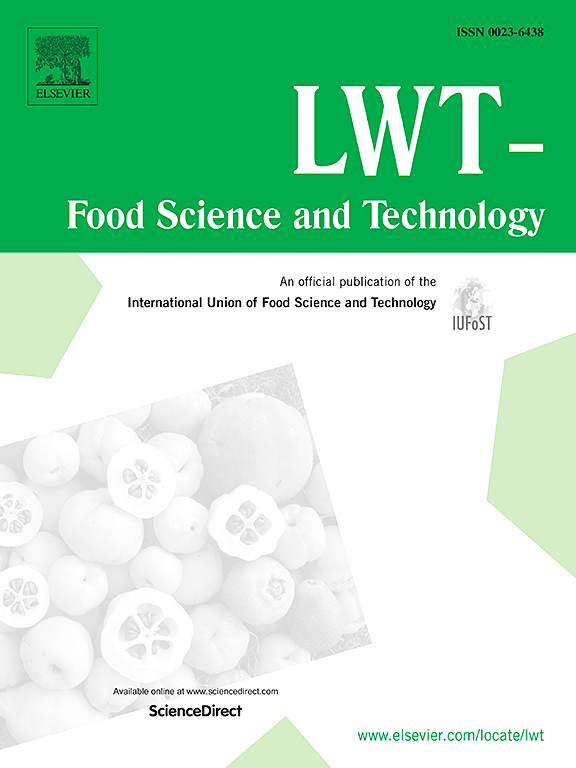Preparation and characteristics of tea water-insoluble protein/chitosan composite particles
IF 6
1区 农林科学
Q1 FOOD SCIENCE & TECHNOLOGY
引用次数: 0
Abstract
The emulsifying properties of tea water-insoluble protein particles (TWIPs) are insufficient to expand their applicability in food emulsifying systems. This study aimed to explore the emulsification characteristics and application of tea water-insoluble protein/chitosan composite particles (TCPs). Scanning electron microscopy showed the TWIPs were tightly coupled with chitosan (CS). The transform of secondary structure and amino acid residues were beneficial to the formation of TCPs and improvement of emulsification performance. Increasing the CS concentration improved the viscoelasticity, as verified by rheological property, and decreased the droplet size of Pickering emulsions (PEs) at a TWIP-CS mass ratio of 50:50. In addition, when the fixed TWIP-CS ratio was 50:50, the TCPs concentration of 0.5% favored the formation of bovine bone white soup with extraordinary emulsification stability (p < 0.05). In conclusion, the emulsification property of TWIPs was improved at a TWIP-CS ratio of 50:50, which was also verified in PEs and bovine bone white soup. This work provided a theoretical basis for the development and further deep processing of tea by-products, and broadened the application of tea protein in liquid emulsification system.
茶叶水不溶性蛋白质/壳聚糖复合颗粒的制备及其特性
茶叶水不溶性蛋白颗粒(TWIPs)的乳化特性不足以扩大其在食品乳化体系中的应用。本研究旨在探索茶叶水不溶性蛋白/壳聚糖复合颗粒(TCPs)的乳化特性及应用。扫描电子显微镜显示,TWIPs与壳聚糖(CS)紧密耦合。二级结构和氨基酸残基的转变有利于 TCPs 的形成和乳化性能的改善。在 TWIP-CS 质量比为 50:50 时,增加 CS 的浓度可改善粘弹性(通过流变特性验证),并减小皮克林乳液(PE)的液滴尺寸。此外,当 TWIP-CS 的固定质量比为 50:50 时,0.5% 的 TCPs 浓度有利于形成具有超强乳化稳定性的牛骨白汤(p <0.05)。总之,在 TWIP-CS 比为 50:50 时,TWIPs 的乳化性能得到了改善,这在 PE 和牛骨白汤中也得到了验证。这项工作为茶叶副产品的开发和深加工提供了理论依据,拓宽了茶蛋白在液体乳化体系中的应用。
本文章由计算机程序翻译,如有差异,请以英文原文为准。
求助全文
约1分钟内获得全文
求助全文
来源期刊

LWT - Food Science and Technology
工程技术-食品科技
CiteScore
11.80
自引率
6.70%
发文量
1724
审稿时长
65 days
期刊介绍:
LWT - Food Science and Technology is an international journal that publishes innovative papers in the fields of food chemistry, biochemistry, microbiology, technology and nutrition. The work described should be innovative either in the approach or in the methods used. The significance of the results either for the science community or for the food industry must also be specified. Contributions written in English are welcomed in the form of review articles, short reviews, research papers, and research notes. Papers featuring animal trials and cell cultures are outside the scope of the journal and will not be considered for publication.
 求助内容:
求助内容: 应助结果提醒方式:
应助结果提醒方式:


